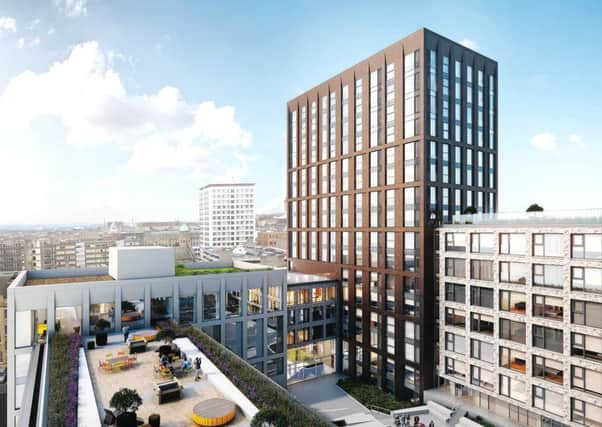Commercial property: Private rental sector is ripe with potential


And all the signs are that the more acutely sensitive among this specialised breed are homing in fast on the private rented sector, lured by Scottish Government guarantees which make developments irresistibly attractive.
For many years now, investment cash has poured into student accommodation complexes across Scotland, to the extent that residents in some areas such as Glasgow’s West End complain that huge developments are changing the nature of the neighbourhood.
Advertisement
Hide AdAdvertisement
Hide AdHowever, bespoke accommodation for students has the feel of a bubble that many think is close to popping.
Even with rising student numbers, the sector is reaching saturation point and there is evidence that rental incomes are starting to slide marginally as a result of fierce competition to attract occupiers.
The private rented sector, in contrast, appears to be at the start of a cycle, with major developers proposing imaginative and attractive developments in the centres of cities where people want to live and work.
A case in point is the new £105 million plan by build-to rent developer Moda which wants to transform the former Strathclyde Police headquarters in Pitt Street.
The 433-apartment scheme, called Holland Park, will be one of Scotland’s largest private housing projects.
It will offer a range of flat styles as well as creating working space, restaurants and health and wellbeing facilities.
The development is ambitious, but it is also reflective of the changing nature of housing in Scotland and indicative of a direction of travel in which private renting is on track to take over from social housing.
Renting, of course, is the norm across much of Europe, and the home-ownership urge in the UK is something of an anomaly.
Advertisement
Hide AdAdvertisement
Hide AdIn Germany, 60 per cent of housing stock is privately rented. In Switzerland, the figure is 56 per cent.
Homes for Scotland has recognised the changing demographic landscape with its Building the Private Rented Sector project which is aimed at achieving a balanced and sustainable mix of tenure.
A key incentive for developers is the Scottish Government’s Rental Income Guarantee Scheme (RIGS), which aims to provide greater confidence in the early stages of development when letting risk is at its highest.
During the RIGS guarantee period, if actual annual core rental income falls below an agreed forecast, the investor will be entitled to a payment equal to 50 per cent of the difference. Scottish Government changes in tenancy agreements, whereby landlords have to give specific reasons for tenancy terminations, are also likely to encourage short-term renters to put down roots in neighbourhoods.
However, from a landlord’s perspective there are some potential challenges and negatives with tenants effectively granted security of tenure and the suggestion of potential rent controls.
Whether this will impact on values remains to be seen.
The accommodation coming on stream may be slightly more expensive than rentals in traditional housing stock, such as tenements, but it is likely to be of significantly higher quality with ancillary facilities and a more reactive regime in relation to dealing with any ongoing repairs.
As activity gears up again this year, private rental provision is a sector to watch.
Graeme Todd is a partner in
the Glasgow north office of DM
Hall Chartered Surveyors.